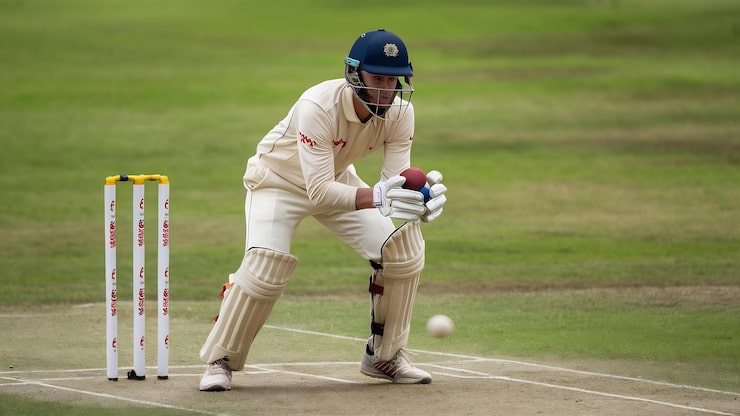Cricket Wicketkeeping Drills are essential for players looking to elevate their game, enhance reflexes, and make impactful contributions on the field. While batting and bowling often steal the spotlight, effective wicketkeeping can turn matches by creating vital dismissals and saving runs. These drills focus on hand-eye coordination, agility, and split-second decision-making, preparing players for high-intensity scenarios.
Modern cricket demands wicketkeepers who are not only physically agile but also mentally alert. Top professionals rely on refined techniques, consistent practice, and strategic drills to maintain sharpness behind the stumps. Incorporating structured wicketkeeping exercises into training routines ensures that players stay ahead of the competition.
Building Quick Reflexes Through Dynamic Drills
One of the most important aspects of Cricket Wicketkeeping Drills is developing lightning-fast reflexes. Catching a ball sharply deviated by spin or reacting to unexpected edges requires more than raw talent; it demands dedicated practice.
A young cricketer training under an experienced coach shared how reaction ball exercises transformed their game. By tossing irregularly bouncing balls, they learned to anticipate unpredictable movements, improving both hand speed and timing. This type of dynamic training closely mimics real-match conditions, providing invaluable preparation.
Footwork and Agility: The Foundation of Effective Keeping
Footwork is the backbone of any competent wicketkeeper. Drills focusing on lateral movement, forward dives, and backward steps ensure that the player reaches every delivery efficiently. Quick, balanced footwork allows seamless transitions from catching to stumping without compromising stance or control.
For instance, ladder drills combined with ball-catching exercises teach players to move swiftly while maintaining focus on the incoming delivery. A professional wicketkeeper noted that consistent practice with footwork-based drills drastically reduced reaction time during live games, demonstrating how these exercises enhance performance under pressure.
Catching Techniques: High, Low, and Behind-the-Stumps
Catching is a critical skill, and Cricket Wicketkeeping Drills incorporate various scenarios to improve reliability. High catches, low scoops, and swift glove movements behind the stumps are practiced repeatedly to build confidence.
During a training session, players often practice with a bowler delivering a mix of fast, spin, and bouncing balls. This variety ensures that keepers adapt quickly to changes in speed and trajectory, simulating real match conditions. One learner recalled how repeated low-ball drills helped them prevent crucial byes in competitive matches.
Enhancing Stumping Speed and Accuracy
Stumping requires precision and rapid execution. Drills that focus on crouch-to-stand movements, quick glove placement, and coordinated footwork significantly improve stumping efficiency.
In a notable practice session, a wicketkeeping trainee practiced stumping by having a coach roll balls at different angles and speeds. Over time, their ability to judge batsmen’s foot placement and react in milliseconds improved, reinforcing the importance of structured drills for honing essential match skills.
Reaction Time Drills Using Technology
Modern Cricket Wicketkeeping Drills often integrate technology to track progress and enhance training outcomes. Reaction lights, motion sensors, and video analysis help players refine reflexes and correct errors.
One academy introduced a light-based reaction system where keepers had to catch balls based on flashing signals. This drill not only tested physical speed but also sharpened decision-making under pressure. Players reported significant improvement in anticipation and glove movement after consistent sessions.
Mental Focus and Anticipation
Wicketkeeping is as much a mental game as a physical one. Drills are designed to enhance focus, concentration, and anticipation. Keepers must read the bowler’s hand, pitch conditions, and batsman’s movement to react accurately.
A top-level player described using scenario-based drills where different field settings and unpredictable ball deliveries tested mental agility. By combining cognitive challenges with physical exercises, wicketkeepers develop a holistic approach to match readiness.
Integrating Game Situations into Practice
Simulating real-game situations is crucial for effective Cricket Wicketkeeping Drills. Incorporating live batsmen, match-like pace, and pressure scenarios ensures that practice mirrors actual performance demands.
In one intensive session, trainees rotated through high-pressure drills involving close catches, stumping, and fast throws to the wickets. These exercises fostered resilience, improved reaction under stress, and provided actionable insights into strengths and weaknesses, preparing players for competitive environments.
Consistency and Long-Term Skill Development
The key to excelling in wicketkeeping is consistent, structured practice. Regular engagement in Cricket Wicketkeeping Drills over months and years builds muscle memory, strengthens reflex pathways, and ensures that keepers remain reliable contributors.
A coach highlighted that players who maintained disciplined daily routines, combining fitness, agility, and catching exercises, consistently outperformed peers in both domestic and professional matches. This emphasizes that wicketkeeping excellence is achieved through persistent, focused effort rather than sporadic practice.
Read also:
clearskinstudy emails addresses
unfit app whatsapp download
www bageltechnews.com
england cricket team vs west indies cricket team match scorecard
afghanistan national cricket team vs england cricket team match scorecard
abu dhabi knight riders vs dubai capitals match scorecard

